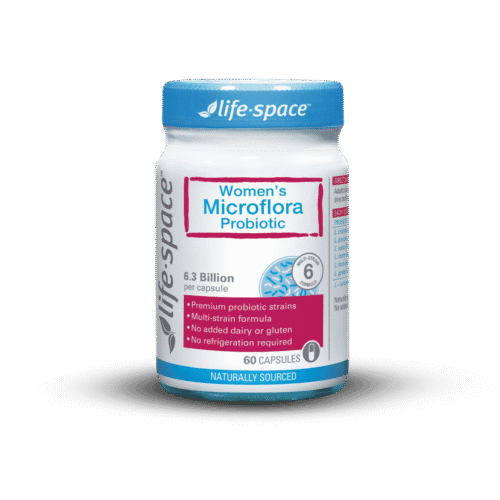Vaginal lactobacillosis (VL) is characterised by an overabundance of longer-than-normal lactobacilli bacterial species. It is currently unknown why the lactobacilli are extra long.
Lactobacilli are normally 5-15 µm long. In VL or lactobacillosis, the bacteria appear in segmented chains 40-75 µm long1.
Some researchers believe2 that about 15 per cent of those who complain of abundant vaginal discharge have lactobacillosis.
It has been suggested that some symptoms of bacterial vaginosis (BV) may, in fact, be lactobacillosis3. Only the right sort of testing can uncover the true situation.
Microbial findings of vaginal lactobacillosis
- Extra long lactobacillus species4 (known as Leptothrix)
- Bizarrely formed lactobacilli
- Abundant lactobacilli
- Inflammatory changes
- Fungi may be present
- Atypical squamous cells of undetermined significance
- Other cell observations
- Other studies have found a connection of L. vaginalis with Trichomonas vaginalis (‘spaghetti and meatballs’)5
Symptoms of lactobacillosis
- Profuse white discharge – differentiating VL with CV
- Thick, creamy, possibly curdy discharge
- Feeling ‘wet’ all the time (in underwear)
- Possible vulvar itching
- Possible burning sensation of the vaginal entrance (introitus) after urinating
- Cleaning up vulvar and perianal area required regularly
- Symptoms most apparent in the second half of the menstrual cycle (post-ovulation), especially right before the menstrual period begins
- Symptoms are often cyclical
- No unusual odour
- pH is within the normal range (3.8-4.5)
- No other clinical findings upon vaginal and cervical examination
- Possibly previously treated for yeast or other microflora imbalances unsuccessfully6
How is lactobacillosis different from cytolytic vaginosis?
Cytolytic vaginosis (CV) is thought to be different to VL because the lactobacilli in CV are regular-sized, and there are other signs, such as debris from epithelial cells and low white blood cell count. CV also presents with numerous intermediate epithelial cells3.
The symptoms of VL and CV are usually very similar, with the main differentiating symptom being excessive discharge with VL7 and the finding under microscopy of the long lactobacilli.
Under the microscope, CV presents with an abundance (2-3 times what might be expected) of normal-sized lactobacilli, while VL has an abundance of both normal-sized and long lactobacilli. In VL, the lactobacilli can be up to eight times as long and may present in bizarre forms.
A comprehensive vaginal microbiome test picks up bacterial DNA, so it isn’t the most useful diagnostic tool for VL. However, these incredibly detailed tests are helpful in determining if symptoms could be related to lactobacilli or something else like BV.
Only a microscopic examination (wet mount) will pick up VL (80% of the time with an experienced practitioner), as otherwise, these longer lactobacilli can’t be detected.
Want to see images? Check out this paper.
Lactobacillosis and vulvodynia
Researchers8 have suggested that since lactobacillosis comes with increased production of lactic acid and hydrogen peroxide, it could cause or contribute to epithelial cell and nerve damage, possibly being a risk factor for vulvodynia.
Lactobacillosis and diabetes
Other researchers found a correlation between type II diabetes mellitus since those with high serum glucose have more vaginal lactobacilli.
Medical and natural treatment of vaginal lactobacillosis
There are many ways to approach an unwanted bacterial overgrowth, but being cautious about preserving healthy species in lactobacillosis can come at a cost. An antimicrobial treatment targeting the Leptothrix (long lactobacilli) is helpful to drop populations, and introducing better species of lactobacilli is important to recolonise the vagina with normal flora.
Probiotics are very important, and getting the advice of an experienced, knowledgeable practitioner is the key to success when treating lactobacillosis.
Medical treatments include oral amoxicillin-clavulanate or doxycycline.
- 500mg amoxicillin clavulanate orally every eight hours for seven days
- 100mg doxycycline every 12 hours for 10 days
- Vaginal nifuratel
- Clavulanate potassium
History of VL – Leptothrix vaginalis
In the early days of VL discovery (1994), the bacteria were described as species, called Leptothrix vaginalis9. It is now thought that these bacteria are still genetically the same as lactobacilli species, but are – for unknown reasons – extra long.
References
- 1.Horowitz BJ, Mårdh PA, Nagy E, Rank EL. Vaginal lactobacillosis. American Journal of Obstetrics and Gynecology. Published online March 1994:857-861. doi:10.1016/s0002-9378(94)70298-5
- 2.Ventolini. Vaginal Lactobacillosis. J Clin Gynecol Obstet. Published online 2014. doi:10.14740/jcgo278e
- 3.Korenek P, Britt R, Hawkins C. Differentiation of the vaginoses-bacterial vaginosis, lactobacillosis, and cytolytic vaginosis. ispub.com. https://print.ispub.com/api/0/ispub-article/12743
- 4.Fitzhugh VA, Heller DS. Significance of a Diagnosis of Microorganisms on Pap Smear. Journal of Lower Genital Tract Disease. Published online January 2008:40-51. doi:10.1097/lgt.0b013e31813e07ff
- 5.von M. [Leptothrix vaginalis. Morphological studies]. Fortschr Med. 1976;94(16):295-298. https://www.ncbi.nlm.nih.gov/pubmed/1261954
- 6.Ferris D, Nyirjesy P, Sobel J, Soper D, Pavletic A, Litaker M. Over-the-counter antifungal drug misuse associated with patient-diagnosed vulvovaginal candidiasis. Obstet Gynecol. 2002;99(3):419-425. https://www.ncbi.nlm.nih.gov/pubmed/11864668
- 7.Ventolini G, Gandhi K, Manales NJ, Garza J, Sanchez A, Martinez B. Challenging Vaginal Discharge, Lactobacillosis and Cytolytic Vaginitis. JFRH. Published online May 24, 2022. doi:10.18502/jfrh.v16i2.9477
- 8.Ricci P, Troncoso JL. Lactobacillosis and Chronic Vulvar Pain: Looking for High-Risk Factors as Precursors in Women Who Developed Vulvodynia. Journal of Minimally Invasive Gynecology. Published online November 2013:S163-S164. doi:10.1016/j.jmig.2013.08.550
- 9.Meštrović T, Profozić Z. Clinical and microbiological importance ofLeptothrix vaginalison Pap smear reports. Diagn Cytopathol. Published online October 15, 2015:68-69. doi:10.1002/dc.23385

Get a fresh perspective with a qualified, experienced vulvovaginal specialist naturopath.
This product has multiple variants. The options may be chosen on the product page
The most comprehensive vaginal microbiome test you can take at home, brought to you by world-leading vaginal microbiome scientists at Juno Bio.

Promote and support a protective vaginal microbiome with tailored probiotic species.






